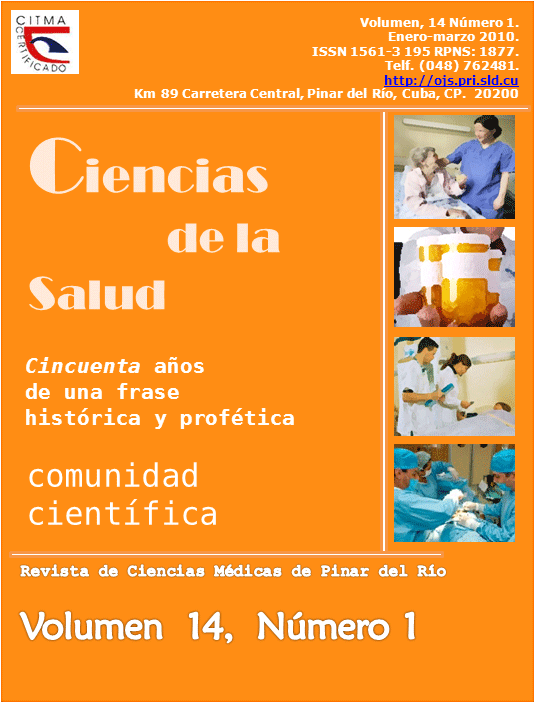A proposal of a methodological strategy to the English subject in medical students of 4th academic degree
Abstract
The mastery of English language by Cuban medical personnel has been a permanent cause of concern for the educational politics in Cuban medical schools. The teaching of English language has evolved and changed together with the improvement of the syllabuses in the different degrees; which has been assessed by means of a literature review. Long since 1970, Cuba is sending medical personnel to Latin-American and Middle Eastern countries, particularly to the African continent, requiring a better preparation of these personnel, specifically in English language. Due to the requirements needed to work in these countries, the methodology in use to teach English language with specific purposes must be also improved seeking for methods and alternatives to enrich teaching-learning process to make it more efficient, providing at the same time useful tools to the future graduates for the professional performances in English as well as self-training. The present paper offers an example of a methodological strategy which is applied to the English language subject taught to the medical students in 4th academic degree; the goal is: to enrich the development of the teaching-learning process in this level, and to contribute to an effective acquisition of linguistic skills to achieve communicative competence in the future graduate.Downloads
References
1. Bueno, Concepción. Plan de estudio de la carrera de medicina. MINSAP. Dirección de docencia médica superior, 2008. Pp.8.
2. Cassola, H. El rol constructivo de los errores en la adquisición de los conocimientos. Revista cuadernos de Pedagogía. Dic. 1983, 108, p. 10.
3. Castellano Simón, Estrategias para promover el aprendizaje desarrollador en el contexto escolar. La Habana Universidad Pedagógica "Enrique José Varona, 2003. Pp.15.
4. Álvarez de Zayas, C. M. Didáctica. La escuela en la vida. Editorial Pueblo y Educación. Ciudad de la Habana, 1999. Pp. 20
5. Finochiaro M, Brumfet: The funcional nocional approach from theory to practice. Edición Revolucionaria, Cuba ,1989. Pp.22.
6. Hutchinson, T. y Waters A. English for Specific Purposes: A Learning Centered Approach. Cambridge University Press, 1999. Pp.35.
7. Álvarez de Zayas, C. M. Pedagogía como ciencia. Epistemología de la Educación. . La Habana Editorial Félix Valera, 1998. Pp.15.
8. Ausubel, D. F .Psicología Educativa. Un punto de vista cognoscitivo. Trillas. México, 1983. Pp. 35.
9. Tatizina, N. F (1998) Conferencia sobre "Los fundamentos de la enseñanza de la educación superior" Dpto. de estudio para el Perfeccionamiento de la Educación Superior. Universidad de La Habana, 1998.P p. 25.
10. Hernández Más Magaly, Bueno Velazco Concepción, González Viera Tomás, López Llerena Mayra. Estrategias de aprendizaje-enseñanza e inteligencias múltiples: ¿Aprendemos todos igual? Rev Hum Med [revista en la Internet]. 2006 Abr [citado Ene 2009]; 6(1): Disponible en: http://scielo.sld.cu/scielo.php?script=sci_arttext&pid=S1727-81202006000100002&lng=es
11. JNC 7 Express. The Seventh Report of the Joint National Committee on Prevention, Detection, Evaluation and treatment of High Blood Pressure. NIH Publicatión; 2003. Pp.3.
12. Bueno Velazco Concepción, Hernández Más Magaly. Inglés con fines específicos: entonces y ahora. Rev Hum Med [revista en la Internet]. 2002 Abr [citado Ene 2009] ; 2(1): Disponible en: http://scielo.sld.cu/scielo.php?script=sci_arttext&pid=S1727-81202002000100003&lng=es
Published
How to Cite
Issue
Section
License
Authors who have publications with this journal agree to the following terms: Authors will retain their copyrights and grant the journal the right of first publication of their work, which will be publication of their work, which will be simultaneously subject to the Creative Commons Attribution License (CC-BY-NC 4.0) that allows third parties to share the work as long as its author and first publication in this journal are indicated.
Authors may adopt other non-exclusive license agreements for distribution of the published version of the work (e.g.: deposit it in an institutional telematic archive or publish it in a volume). Likewise, and according to the recommendations of the Medical Sciences Editorial (ECIMED), authors must declare in each article their contribution according to the CRediT taxonomy (contributor roles). This taxonomy includes 14 roles, which can be used to represent the tasks typically performed by contributors in scientific academic production. It should be consulted in monograph) whenever initial publication in this journal is indicated. Authors are allowed and encouraged to disseminate their work through the Internet (e.g., in institutional telematic archives or on their web page) before and during the submission process, which may produce interesting exchanges and increase citations of the published work. (See The effect of open access). https://casrai.org/credit/



